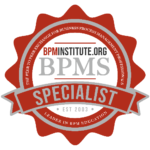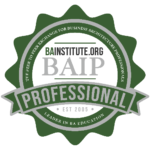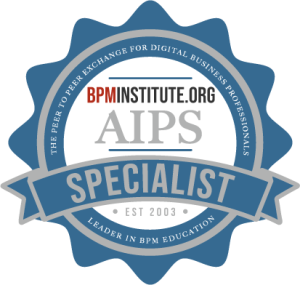If you are leading your organization’s business capability model (BCM) development, here are some guidelines that you can follow.
August 7, 2008
Associate Corporate Membership

Drew Guitarte
Business Architecture (BA)
Business Process Management (BPM)
Cloud Computing
Digital Transformation (DX)
Articles by: Drew Guitarte
Business Capability Redefined According to SMACT
Innovate or die. That is the mantra of successful organizations that compete in a fast-transforming digital world. Those who harness social media, mobile, analytics, cloud computing, and Internet of things (SMACT) to digitize the business win in the marketplace. Those who don’t, lose. It is a wild, wild digital world out there.
Business architects embedded in successful organizations need to innovate as well or lose relevance. The world where business architecture matters has changed. Old paradigms give way to the new. One area that needs rethinking is how business architects define a business capability.
Business Architects Are Data Scientists
A 2015 McKinsey report states that advanced analytics will be used three times more often in 2020 than today. That’s just 4 years from now. The report also states that insight-driven companies out-perform peers. But the trick lies in not just distinguishing relevant from irrelevant data or translating these data into insights. Those are simply “table stakes” and companies are expected to do those activities well at a minimum. What separates the achievers from their peers is their ability to translate these insights into “impactful frontline actions.”
We have the same goal as data scientists to provide actionable insights. We often hear this mantra of “actionable insights” from business architects. If not, you should familiarize yourself with this term right away. “Actionable insights,” we shall mutter with every breath we take.
Responsive Business Architecture
Responsive web design is fast becoming a mantra in the digital media design. The idea is to create compelling experiences that adeptly respond to how a person interacts with digital media. It doesn’t matter what device I use to browse an electronic commerce website; the form and content should make it easy for me to find what I’m looking for. And maybe buy more of their products, more often.
I make the same case for responsive business architecture. As a decision-maker, I need all the tools, techniques, and information I can get to make the most-informed decisions on a daily basis. Decision making is both an art and science. I can turn to a business architect and listen to the options available to me. And I can ask my lawyer, accountant, fellow Board members, or any subject matter expert for their opinions. In the end, I synthesize data and information to come up with the best possible decision at that time.
A Day in the Life of a Business Architect
Tuesday was a good day at the office, although nothing out of the typical. I attended two high profile meetings with the product management team and a joint product management and technology requirements definition meeting, received news of my promotion, presented a tool that our team built to solve a resource manager’s allocation problem, and got to work on a really cool proposal to map out a business process end-to-end on a single page of paper.
I always thought simplistically that my role as a business architect is to help bridge the gap between what the owners of the company want and what the rest of the organization delivers. I stand in between those who hold the purse and those who wield the hammer (or whatever your tool of choice may be) so I can better link the two to generate outstanding business results. I’m after business outcomes and so should everyone else in the organization, right? It’s that simple.
Wanted: A New Business Architecture Framework
We’re familiar with the enterprise architecture (EA) frameworks such as those of Zachman, TOGAF, and Federal EA Framework (FEAF). These frameworks provide a conceptual structure of ideas (Merriam-Webster, 2014) that helps us understand the process, value, and function behind EA. Is there one among these more popular frameworks that adequately expands on the business architecture value proposition of aligning strategy with tactical demands? Probably not.
What we need is a new business-oriented and customer-centric business architecture framework. Allow me to introduce a set of concepts and principles for this new framework that’s closer to the essence of business architecture. Let’s call this new framework, for lack of a better term the Enterprise Business Architecture Framework (or EBAF).
Business Architects Architect your Success
I am not an enterprise architect. I’m a business architect. The difference lies in the customers we primarily serve. Historically, the business architecture perspective has been part of every enterprise architecture framework. Only recently has there been a clamor to treat business architecture as a separate profession and discipline with its own set of culture, adherents, and customers.
Why Business Architects Should Operate Outside EA
I’d like to make the case why business architects should operate outside of enterprise architecture (EA).
First, business architects are “big thinkers” and more business savvy than their EA counterparts. Their cultures clash. No matter how much EAs cast themselves as strategic thinkers, trusted advisors, or business partners there still seems a stigma that EA is only all about IT. This stigma stuck for decades and may help explain why IT-oriented EAs attracted only their kind. Meanwhile, recent converts to business architecture possess a distinct left- and right-brained aptitude for stating holistic viewpoints that are rigorous, well-understood, and fact-based. Some of them are ex-product managers, ex-business analysts, ex-sales, ex-entrepreneur, or simply ex-EAs or ex-IT pros who recently earned their MBAs and a light bulb went on, so to speak.
Business-IT Aggregation versus Alignment
Business and Information Technology (hereafter referred to as business-IT) alignment is so passé. Welcome the (relatively) new concept called Business-IT aggregation. The phrase “business aggregation” sometimes refers to a corporation that’s controlled by several key investors tasked to manage the corporation based on a succession plan. The word “aggregation” means the sum of the parts, the totality of components, or simply “the whole”. One dictionary (AllBusiness.com, 2010) defines it as “any bringing together of parts or units to form a collective whole.”
Building Business Architecture That Endures
Two of my biggest passions are business architecture and participating in endurance events like an Ironman® or an ultramarathon. Having excelled in both over the years taught me a few lessons. At the end of the day, every business architect’s goal to improve decision-making and accountability for business outcomes is not much different from an endurance athlete’s goal to win. I even coined the term “endurance architect” to aptly describe what I do. In my opinion, an endurance architect is someone who can bring the lessons from the playing field to the boardroom and vice versa to achieve sustainable profitability and/or self-actualization. How do we achieve these lofty goals? Let me start with the nuances of strategy and outline the steps of achieving success through strategic co-alignment, with examples from an endurance architect’s point of view.
What is strategy?























